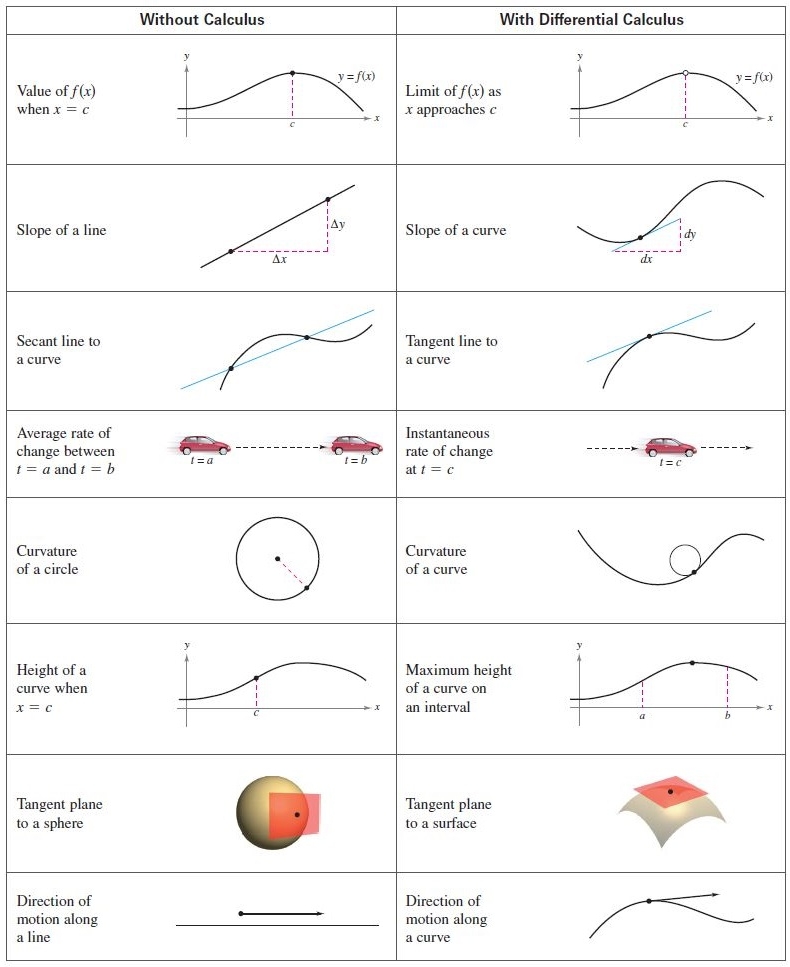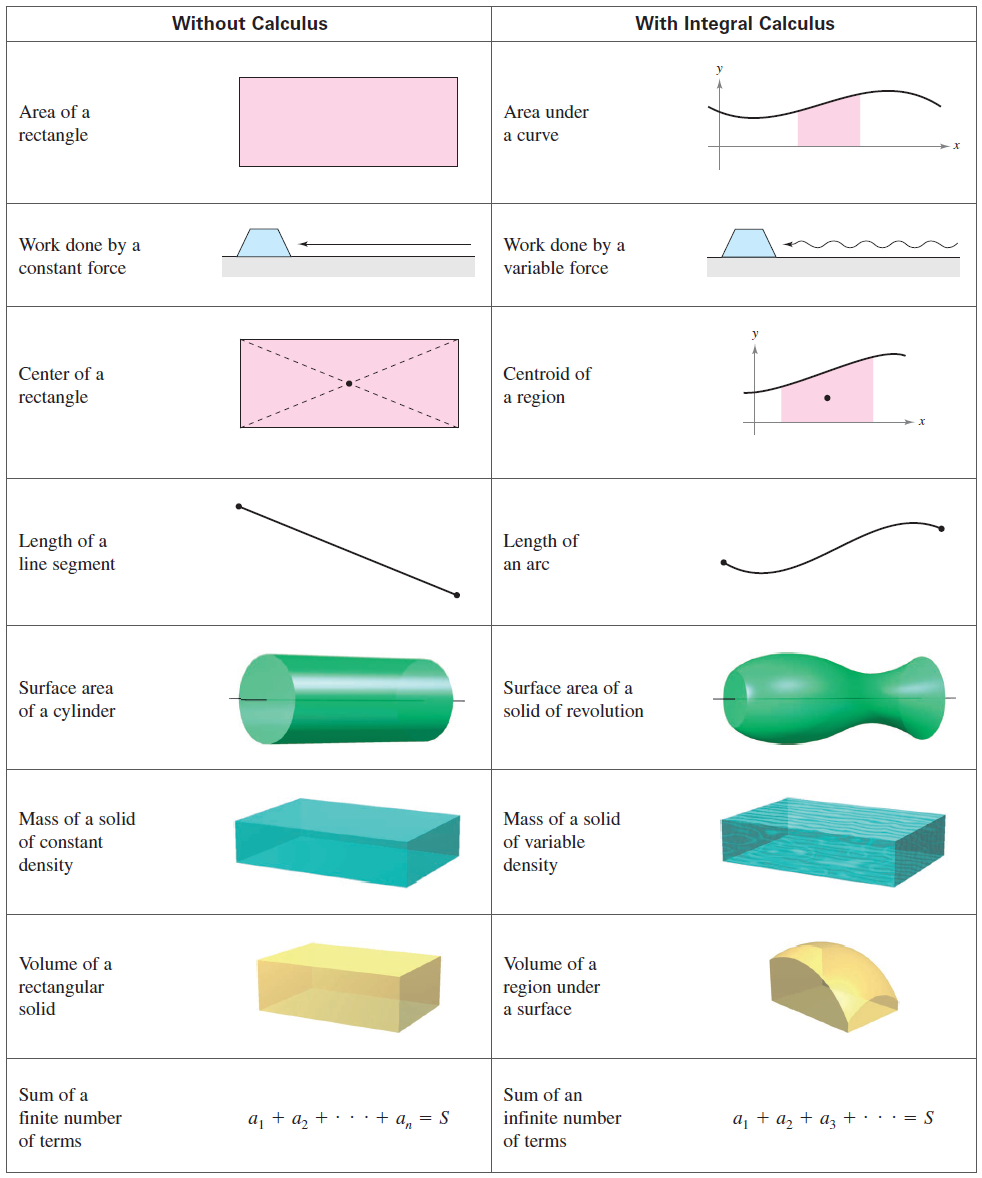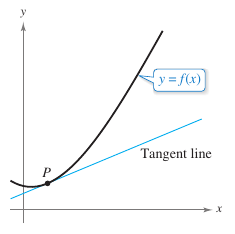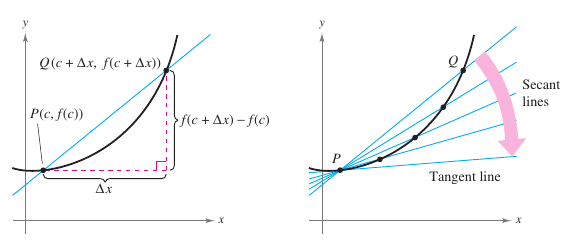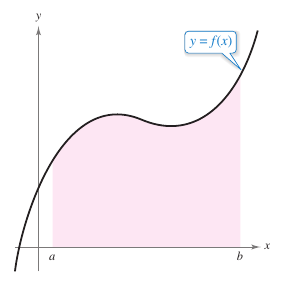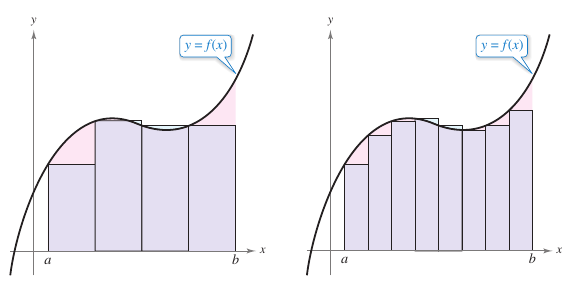Calculus I 01.01 What is Calculus?
| Next | Calculus I 01.02 Finding Limits Graphically and Numerically |
Contents
Calculus I 01.01 What is Calculus?
- What is calculus and how it compares with precalculus.
- How the tangent line problem is basic to calculus.
- How the area problem is basic to calculus.
Calculus[1]
Calculus is a mathematical language that describes continuous change. For example, varying speeds, irregular volumes, shifting flow and complex curves can be modeled exactly in calculus where precalculus fails. This enables everyone from scientists to engineers to anthropologists to model real-world phenomena exactly. Automobiles, steam engines, airplanes, air conditioning, computers, and cellular telephones would all be impossible to build without calculus.
Calculus has two major branches, differential calculus[2] and integral calculus[3]. Differential calculus describes instantaneous changes rates. Integral calculus describes accumulating infinitely small quantities and the areas under and between curves.
While precalculus describes a static state precisely, calculus describes a state in transition to an infinite degree. As shown in Figure 1.1.1 below:
The Tangent Line Problem
|
|
The Limit is the fundamental idea in Calculus. Two classic problems in Calculus, the tangent line problem and the area problem, describe how limits are used in Calculus. In the tangent line problem, a function \(f\) and a point \(P\) on its graph and are asked to find an equation for the tangent line to the graph at point P, as shown in Figure 1.1.3. Except for a vertical tangent line, the problem is equivalent to finding the slope for the tangent line at \(P\). Approximate this slope by using a line through the tangency point and a second point on the curve, as shown in Figure 1.1.4(a). Such a line is called a secant line. If \(P(c,f(c))\) is the tangency point and
is a second point on the graph for \(f\), then the secant line slope through these two points using precalculus and is
Figure 1.1.4(a) describes how the secant lines approach the tangent line as \(x\) decreases. As point \(Q\) approaches point \(P\), the secant line slopes approach the tangent line slope, as shown in Figure 1.1.4(b). The limit is reaches when the secant line slops meet the tangent line slope. This concept will be described in more detail in Chapter 2 Differentiation. |
The Area Problem
|
|
The Area Problem is finding the area for a plane region bounded by one or more function graphs. The limit process is applied to a rectangle's area to find the area for a general region. Consider the region bounded by the graph for \(y=f(x)\), the \(x\)-axis, and the vertical lines \(x=a\) and \(x=b\), as shown in Figure 1.1.5. The area can be approximated with several rectangular regions, as shown in Figure 1.1.6(a). The rectangle parts that overlap the graph cancel each other out, to an extent. As the rectangle count increases so does the approximation as area missed by the rectangles decreases, as shown in Figure 1.1.6(b). When the rectangle count reaches infinity rectangle areas reach a limit that equals the area under the graph and the area where the rectangles overlap the graph vanish. This book describes how to calculate that limit. |
Internal Links
Parent Article: Calculus I 01 Limits and Their Properties
